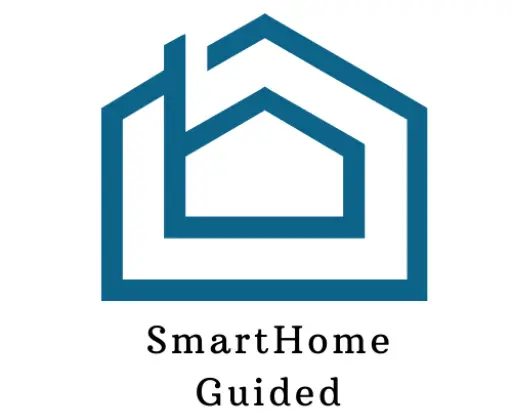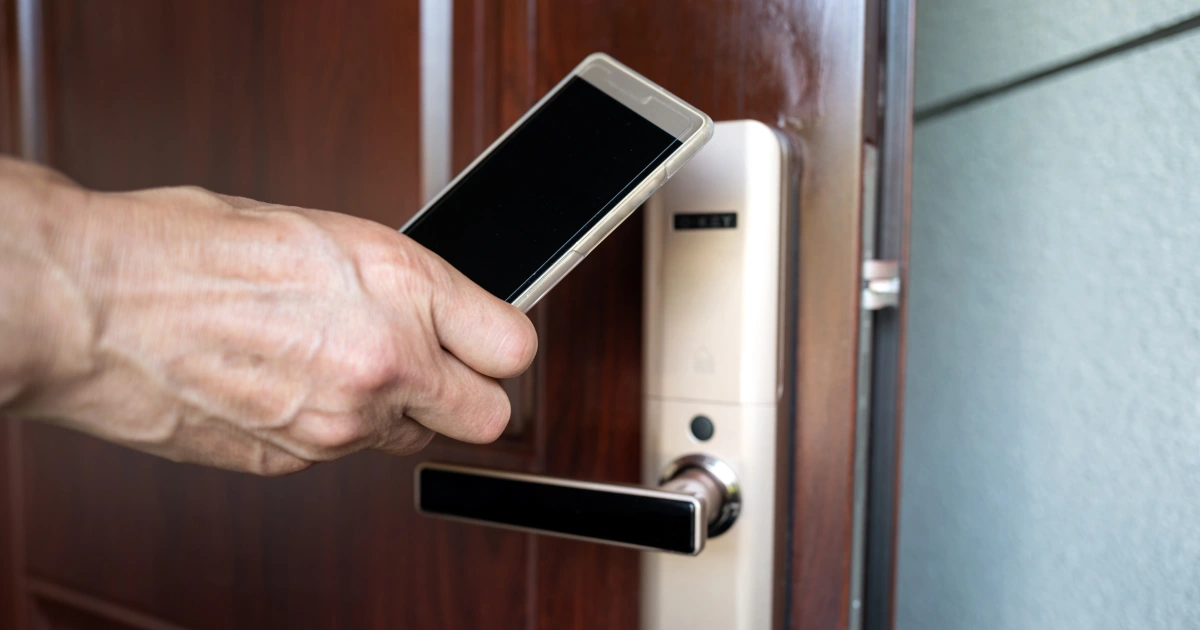Some smart locks can only function when connected to Wi-Fi, but others allow for the use of cellular data or Bluetooth wireless technology instead.
Cellular-enabled smart locks use mobile networks to communicate with the internet, making them less susceptible to hacking than those connected via Wi-Fi.
Bluetooth alternatives let users pair their devices locally. Wired alternatives are available for those who prefer not to use wireless technology.
In the event of a power outage or other emergency, some smart locks also offer offline access via physical keys or touchpads. The battery may need to be replaced sooner than a year, depending on how often you use your device.
Is a Wi-Fi Smart Lock safe?
Symbolism can be used to describe Wi-Fi-enabled smart locks as a double-edged sword. While they offer convenience and remote access, they also pose privacy concerns and network security risks.
With the ability to connect to the internet, these locks are more susceptible to hacking attempts than traditional ones that operate offline.
To address these concerns, manufacturers of Wi-Fi smart locks have implemented data encryption protocols to safeguard user information against unauthorized access.
However, there is still room for improvement in this area since some models may not use strong enough encryption methods.
Furthermore, users should take extra steps to secure their home networks by using unique passwords and enabling two-factor authentication when possible.
Another factor that needs consideration is battery life; longer-lasting batteries mean fewer interruptions in service or potential vulnerabilities due to low power levels.
Wi-Fi-enabled smart locks are more convenient than traditional lock-and-key systems, but they have drawbacks regarding privacy, network security, data encryption strength, remote access, and battery life.
Wifi-Enabled Smart Locks
As mentioned in the previous section, one of the factors to consider when choosing a smart lock is whether it should be Wi-Fi-enabled or not.
Interestingly, according to a recent study by MarketsandMarkets, the global smart lock market size is expected to reach USD 4.2 billion by 2026, with a CAGR of 13.1% from 2020 to 2026.
This indicates that more and more people are becoming interested in using wireless connectivity for their home security.
WiFi-enabled smart locks allow remote access. This feature lets homeowners control their locks from anywhere with an internet connection.
However, it’s important to note that this type of functionality may affect battery life since it requires constant communication between the lock and its network.
For non-technical people, installing the device may require additional steps, like connecting it to your home’s WiFi network.
Nevertheless, modern WiFi-enabled smart locks have advanced security features such as multi-factor authentication and encryption protocols, making them secure against hacking attempts.
Non-Wifi-Enabled Smart Locks
First, smart locks without WiFi don’t need a constant internet connection, so they use less energy and have longer battery life. This is helpful for people who aren’t good about regularly changing their batteries because they might forget or avoid the hassle.
Since no network setup is required, setting up the lock is as easy as replacing the existing one with a compatible one and downloading the corresponding app to enable Bluetooth communication.
Non-Wi-Fi-enabled smart locks use Bluetooth technology to allow remote access, but their range is significantly smaller than that of Wi-Fi-enabled ones.
Despite this, these smart locks continue to rise in popularity among security-conscious people who value simplicity and dependability in operation over flashy extras.
The Differences between a WIFI smart lock and a non-WIFI smart lock
Homeowners who don’t want to rely on WiFi connectivity to secure their homes often choose smart locks that don’t require it. These locks typically feature Bluetooth or Zigbee connectivity options, giving homeowners more flexibility in managing who has access to their dwellings.
Installing a non-WiFi smart lock is straightforward and requires no special equipment or expertise. They are a practical choice for do-it-yourselfers because they can be mounted in the same deadbolt hole as most common doors.
These locks may have limited remote access capabilities because they use Bluetooth or other proximity-based connections rather than WiFi signals, which offer greater range.
When comparing WiFi-enabled and non-enabled smart locks, it is important to consider battery life, as some models may have shorter battery lives.
Last but not least, the user interface is crucial in providing comfort and ease of use for homeowners who would rather not deal with complicated controls.
Security
The primary feature of smart locks is access control, which lets users manage who can enter a building. Smart locks are designed with encryption algorithms that provide secure data transmission between the lock and its corresponding device.
For an added layer of protection, smart locks provide a number of authentication methods, including biometric authentication.
Due to the fact that only authorized individuals will have their fingerprints, facial recognition patterns, etc., on file, biometrics makes it difficult for unauthorized individuals to gain access.
It is also impossible to physically pick or break into a smart lock due to its tamper-proof design and hardened materials.
Some smart lock systems may still be susceptible to security breaches due to lingering network vulnerabilities if manufacturers and end users don’t take the necessary precautions.
Reliability
According to a recent survey by Security.org, nearly two-thirds of respondents are considering buying a smart lock.
The high-tech features and ease of use have their drawbacks, though. Problems with WiFi or Bluetooth compatibility can limit their usefulness. This can prevent users from remotely accessing their locks, which is the whole point of installing a smart lock in the first place.
Battery life is another concern. While most smart locks feature long-lasting batteries, there have been incidents where users have been locked out when the power suddenly went out.
When selecting a smart lock for outdoor use, it’s also important to think about how well it holds up in adverse weather. Some models may not function properly in very hot or very cold temperatures or in heavy rain.
Finally, improper installation or operation can reduce reliability, leading to malfunctions and security holes. To get the most out of your smart lock system and rest easy, you should think about these things first.
Cost
It is important to factor in installation, maintenance, subscription, repair, and replacement costs when estimating the total cost of smart locks.
Costs for installation can range from free to several hundred dollars, with do-it-yourself (DIY)DIY kits for commonly used locks being the most cost-effective option.
Replacement batteries and software updates are typically the only significant costs associated with maintenance.
You may have to pay a subscription fee if you want more advanced features like remote access or integration with home automation systems.
Replacement costs come into play when your device has reached the end of its useful life, while repair costs may arise in the case of damage due to external forces or technical malfunctions.
Functions and features
One of their primary functions is remote access, which allows users to lock or unlock doors from anywhere using a smartphone app.
This feature requires an internet connection because the user’s phone sends a signal over Wi-Fi or cellular data networks to communicate with the smart lock.
Remote access also enables users to grant temporary access codes for guests, service providers, or family members who need entry into the home when they’re not around.
Another essential function of smart locks is keyless entry. This means that users can open the door without requiring a physical key. Instead, they use a code or biometric identification, such as fingerprints or facial recognition technology.
Keyless entry offers several benefits, such as improved security since there’s no risk of losing keys, and it eliminates the hassle of carrying multiple keys for different doors in your home.
Additionally, most smart locks have voice control features that allow you to operate them hands-free; this comes in handy when entering your house with groceries or other items in hand.
Device Integration Capabilities
The ability to connect your smart lock to other home automation systems is a major perk. Your locking system can be operated by voice commands or a mobile app with the help of WIFI or Bluetooth connectivity.
However, compatibility issues can be encountered when connecting multiple electronic systems to a single network. It is essential to check the specifications of each device before purchasing it to ensure it will work with the others.
Conclusion
The question of whether or not smart locks need Wi-Fi is an important one for those considering purchasing these devices.
While some may argue that WiFi-enabled smart locks are necessary for seamless integration with other smart home devices, others may prefer non-Wi-Fi-enabled options for added privacy and security.
Regardless of which type they choose, users must take precautions to ensure their device’s safety by choosing strong passwords and keeping software updated regularly.
As the saying goes, ‘an ounce of prevention is worth a pound of cure,’ so it always pays off to be proactive when it comes to securing your home.

